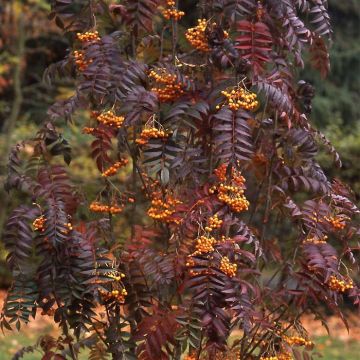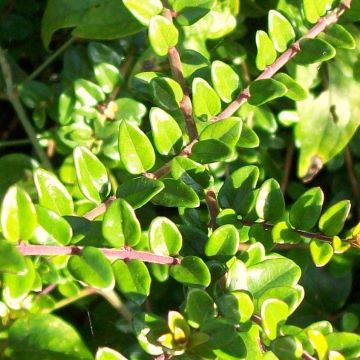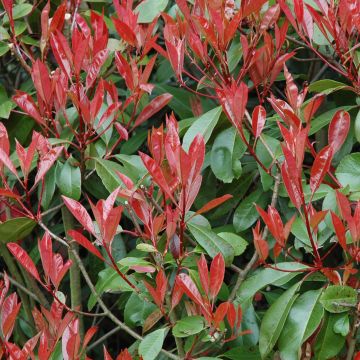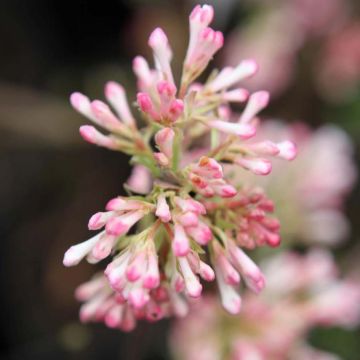

Sorbus Rubinowaja - Sorbus x Pyrus


Sorbus Rubinowaja - Sorbus x Pyrus
Sorbus Rubinowaja - Sorbus x Pyrus
Sorbus x Pyrus Rubinowaja
Rowan and Pear Hybrid
Special offer!
Receive a €20 voucher for any order over €90 (excluding delivery costs, credit notes, and plastic-free options)!
1- Add your favorite plants to your cart.
2- Once you have reached €90, confirm your order (you can even choose the delivery date!).
3- As soon as your order is shipped, you will receive an email containing your voucher code, valid for 3 months (90 days).
Your voucher is unique and can only be used once, for any order with a minimum value of €20, excluding delivery costs.
Can be combined with other current offers, non-divisible and non-refundable.
Home or relay delivery (depending on size and destination)
Schedule delivery date,
and select date in basket
This plant carries a 24 months recovery warranty
More information
We guarantee the quality of our plants for a full growing cycle, and will replace at our expense any plant that fails to recover under normal climatic and planting conditions.
Would this plant suit my garden?
Set up your Plantfit profile →
Description
Sorbus 'Rubinowaja' is an inter-generic hybrid between a Rowan and a Pear tree. Appearing closer to Rowans, it forms a large bush or small tree with a slightly more spreading habit than the latter. Its deeply lobed foliage is quite ornamental, especially in autumn when it changes from green to orange-yellow. It produces white flowers in spring, which then develop into very attractive clusters of dark red fruits. These berries can be consumed fresh or processed and have a pleasant taste devoid of bitterness. This very hardy plant is easy to cultivate in most conditions.
The Rowan is a member of the large Rosaceae family, which comprises around 5000 species. This family includes native plants from the countryside (hawthorn, burnet...), numerous ornamental plants (Cotoneaster, Eriobotrya...) and the majority of fruit trees (Pear, Apricot...). The particularly generous Sorbus genus comprises about a hundred species, which can be divided into two main types: the Rowans, with compound leaves, and the Service trees, with simple leaves. As is often the case with Rosaceae, viable cross-breeding occurs between different genera, involving a Hawthorn (x Crataegosorbus), an Aronia (x Sorbaronia) or a Pear (x Sorbopyrus).
This is the case with 'Rubinowaja', a hybrid variety between Sorbus aucuparia (Bird Cherry) and a Pyrus (of an unknown species). It was developed in Michrurinsk, within the Russian Institute of Genetics and Selection of Fruit Plants, and marketed in the USSR after the Second World War. In 2010, this variety received an award at the international "Green is Life" exhibition in Poland. It is compact and it forms a bush or small tree 2.5 m to 4 m high, with a width of 2 to 3 m. The crown is moderately dense, and the habit is slightly more spreading than pure Rowans, which are generally conical to pyramidal. The shoots are fine and flexible, often trailing, grey-brown and smooth. They bear compound, odd-pinnate leaves, consisting of 11 to 15 leaflets. The leaflets are oppositely arranged in pairs on either side of the central stem of the leaf, with the odd leaflet occupying the tip. In some leaves, it happens that the last three leaflets are imperfectly lobed, partially merging, as if the genes of the Pear, a species with entire leaves, are trying to express themselves. The medium green, slightly glossy leaves, have a rather ornamental pattern. Towards the end of April (depending on the region), umbels of 10 to 12 cm in diameter appear, composed of small white flowers. They are honey-bearing and loved by bees, thus adding a useful dimension to the ornamental character of the plant. Partially self-fertile, fruiting will occur even if planted in isolation but may be more intense near another Rowan. After fertilization, small spherical berries appear, turning red from August. In September, the 8 mm diameter fruits are dark red and ready to be harvested. Slightly smaller than those of the average other varieties, they are nevertheless numerous enough for the clusters, nicely highlighted by the foliage, to create an attractive scene. The berries with yellow flesh are sweet, juicy, sweet-sour and without bitterness. They can be consumed fresh or processed into jams, compotes, jellies, syrups... Rich in vitamins C and PP (up to 900 mg per 100 g), they also contain vitamins A and E. In autumn, the deciduous foliage turns orange-yellow before falling to the ground.
Sorbus 'Rubinowaja' is an original variety that will be perfectly suited to small urban gardens, as well as in rural areas where its somewhat wild appearance will integrate very well. Very hardy and easy to cultivate in most soils, in full sun or even partial shade, you can associate it with other plants within a varied border. To create a nice contrast of colours, choose a Physocarpus with purple or golden foliage. This small bush, just as accommodating as the Rowan, will find its place at its feet, and its natural silhouette will harmonise ideally with that of the Rowan. To extend the flowering period of your border, rely on Forsythias, whose explosion of luminous yellow flowers is unparalleled for brightening the early days of spring. Ribes sanguineum 'Amore' is a flowering Currant with red to pink flowers that will then take over in April-May, and whose rustic charm will remain in tune with your border.
Report an error about the product description
Plant habit
Flowering
Foliage
Botanical data
Sorbus x Pyrus
Rubinowaja
Rosaceae
Rowan and Pear Hybrid
Cultivar or hybrid
Other Sorbus - Mountain Ash
View all →Planting and care
Sorbus 'Rubinowaja' is best planted in autumn in any soil, preferably moist (but it tolerates dryness once well-rooted), ideally slightly acidic to neutral (while also tolerating chalky conditions). It is not particularly demanding and adapts to loamy, clayey, or sandy soils. Dig a planting hole 60 to 80 cm wide and add some compost at the bottom if the soil is poor, along with slightly acidic planting soil (pH around 6.5). Soak the container in a bucket to thoroughly moisten the root ball before placing it in the planting hole. Backfill and water generously; monitor watering during the first two years to allow the tree to establish well.
It will thrive in both sunny and semi-shaded conditions and has no specific requirements. It is a pioneering species capable of establishing in poor soils.
Planting period
Intended location
Care
This item has not been reviewed yet - be the first to leave a review about it.
Similar products
Haven't found what you were looking for?
Hardiness is the lowest winter temperature a plant can endure without suffering serious damage or even dying. However, hardiness is affected by location (a sheltered area, such as a patio), protection (winter cover) and soil type (hardiness is improved by well-drained soil).

Photo Sharing Terms & Conditions
In order to encourage gardeners to interact and share their experiences, Promesse de fleurs offers various media enabling content to be uploaded onto its Site - in particular via the ‘Photo sharing’ module.
The User agrees to refrain from:
- Posting any content that is illegal, prejudicial, insulting, racist, inciteful to hatred, revisionist, contrary to public decency, that infringes on privacy or on the privacy rights of third parties, in particular the publicity rights of persons and goods, intellectual property rights, or the right to privacy.
- Submitting content on behalf of a third party;
- Impersonate the identity of a third party and/or publish any personal information about a third party;
In general, the User undertakes to refrain from any unethical behaviour.
All Content (in particular text, comments, files, images, photos, videos, creative works, etc.), which may be subject to property or intellectual property rights, image or other private rights, shall remain the property of the User, subject to the limited rights granted by the terms of the licence granted by Promesse de fleurs as stated below. Users are at liberty to publish or not to publish such Content on the Site, notably via the ‘Photo Sharing’ facility, and accept that this Content shall be made public and freely accessible, notably on the Internet.
Users further acknowledge, undertake to have ,and guarantee that they hold all necessary rights and permissions to publish such material on the Site, in particular with regard to the legislation in force pertaining to any privacy, property, intellectual property, image, or contractual rights, or rights of any other nature. By publishing such Content on the Site, Users acknowledge accepting full liability as publishers of the Content within the meaning of the law, and grant Promesse de fleurs, free of charge, an inclusive, worldwide licence for the said Content for the entire duration of its publication, including all reproduction, representation, up/downloading, displaying, performing, transmission, and storage rights.
Users also grant permission for their name to be linked to the Content and accept that this link may not always be made available.
By engaging in posting material, Users consent to their Content becoming automatically accessible on the Internet, in particular on other sites and/or blogs and/or web pages of the Promesse de fleurs site, including in particular social pages and the Promesse de fleurs catalogue.
Users may secure the removal of entrusted content free of charge by issuing a simple request via our contact form.
The flowering period indicated on our website applies to countries and regions located in USDA zone 8 (France, the United Kingdom, Ireland, the Netherlands, etc.)
It will vary according to where you live:
- In zones 9 to 10 (Italy, Spain, Greece, etc.), flowering will occur about 2 to 4 weeks earlier.
- In zones 6 to 7 (Germany, Poland, Slovenia, and lower mountainous regions), flowering will be delayed by 2 to 3 weeks.
- In zone 5 (Central Europe, Scandinavia), blooming will be delayed by 3 to 5 weeks.
In temperate climates, pruning of spring-flowering shrubs (forsythia, spireas, etc.) should be done just after flowering.
Pruning of summer-flowering shrubs (Indian Lilac, Perovskia, etc.) can be done in winter or spring.
In cold regions as well as with frost-sensitive plants, avoid pruning too early when severe frosts may still occur.
The planting period indicated on our website applies to countries and regions located in USDA zone 8 (France, United Kingdom, Ireland, Netherlands).
It will vary according to where you live:
- In Mediterranean zones (Marseille, Madrid, Milan, etc.), autumn and winter are the best planting periods.
- In continental zones (Strasbourg, Munich, Vienna, etc.), delay planting by 2 to 3 weeks in spring and bring it forward by 2 to 4 weeks in autumn.
- In mountainous regions (the Alps, Pyrenees, Carpathians, etc.), it is best to plant in late spring (May-June) or late summer (August-September).
The harvesting period indicated on our website applies to countries and regions in USDA zone 8 (France, England, Ireland, the Netherlands).
In colder areas (Scandinavia, Poland, Austria...) fruit and vegetable harvests are likely to be delayed by 3-4 weeks.
In warmer areas (Italy, Spain, Greece, etc.), harvesting will probably take place earlier, depending on weather conditions.
The sowing periods indicated on our website apply to countries and regions within USDA Zone 8 (France, UK, Ireland, Netherlands).
In colder areas (Scandinavia, Poland, Austria...), delay any outdoor sowing by 3-4 weeks, or sow under glass.
In warmer climes (Italy, Spain, Greece, etc.), bring outdoor sowing forward by a few weeks.


















































